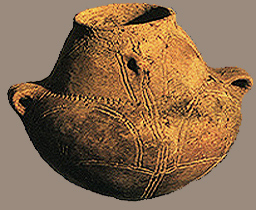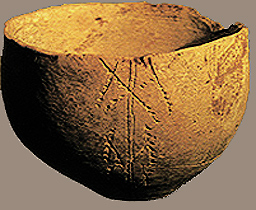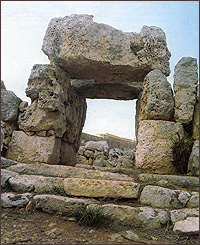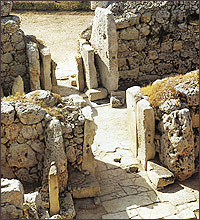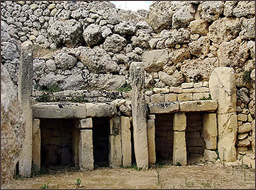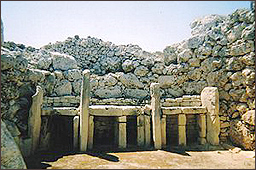 |
 |
ZEBBUG – c. 4100-3800 BC |
Page 2/6 |
A new wave of farming settlers from Sicily. The Zebbug type-site produced rock-cut tombs, characterized by pear shaped jars and schematized painted or incised human representations. Representations are shown below, (left) jar of the Zebbug phase with incised pattern suggestive of the human figure, (right) complete pear-shaped jar with incised decoration and handles at the shoulder and neck.
Pear-shaped Jar with Incised Decoration
 |
MGARR – c. 3800-3600 BC |
Following the Zebbug phase of Malta temple building came the Mgarr period (c. 3800-3600 BC) this was a short tranistional phase with typical pottery consisting of mainly curved lines.
Artifacts are typically coated in red ochre and it has been suggested that their use may have been funereal; Mġarr pottery is similar to the objects found in Ta' Trapna neolithic tombs. The discoveries attracted considerable attention in academic literature, including the internationally received study of Elizabeth de Manneville.
To the right, a view of the trilithic entrance of the western trefoil-shaped temple at Ta' Hagrat, Mgarr.
 |
GGANTIJA – c. 3600-3000 BC |
It is during the Ggantija phase (c. 3600-3000 BC) that temples begin to be constructed, simply at first, but then increasingly more sophisticated. For example, the internal plan of the temple became heavily stylized in structure, evolving from the trefoil to the symmetrical five-apsed plan. The type-site is a truely megalithic complex, gargantuan in dimension with its huge stone blocks.
The Temple at Ggantija remains in a surprisingly good state of preservation. To the right, the paved passageway entrance of the South Temple at Ggantija. The rough-shaped blocks of the walls, in hard coralline limestone, contrast the smooth surfaced well-finished Globigerina blocks flanking the passageways.
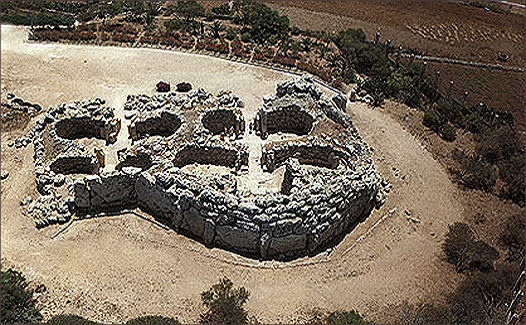
Below a close up view of the apse with three thilithic niches at Ggantija.
The Apse with three Thilithic Niches
Ggantija Phase of Temple Building
→
Bradshaw Foundation
